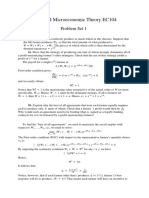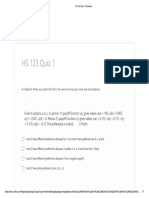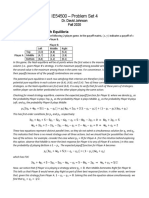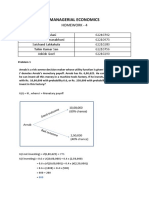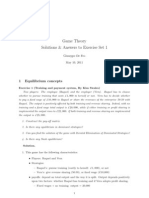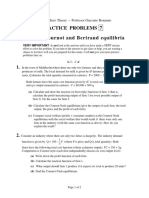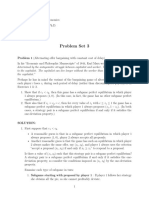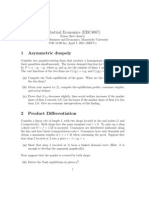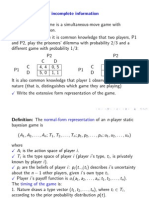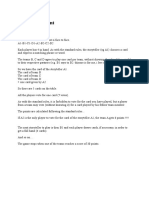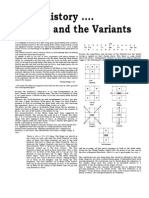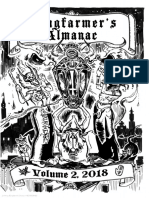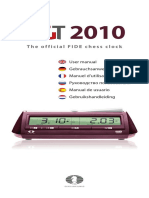0% found this document useful (0 votes)
42 views8 pagesProblem Set 2 Solutions
1) In a Cournot oligopoly model with n symmetric firms and inverse demand function P(Q) = 100 - Q, the Nash equilibrium involves each firm producing a quantity of 14 and the aggregate quantity being 14n.
2) The strategy profile where each firm produces a quantity of 49/n, yielding an aggregate quantity of 49, is not a Nash equilibrium because each firm's best response is to produce more than 49/n.
3) Firms prefer the Nash equilibrium over the strategy profile where each produces 49/n because profits are higher in the Nash equilibrium.
Uploaded by
RJ DianaCopyright
© © All Rights Reserved
We take content rights seriously. If you suspect this is your content, claim it here.
Available Formats
Download as PDF, TXT or read online on Scribd
0% found this document useful (0 votes)
42 views8 pagesProblem Set 2 Solutions
1) In a Cournot oligopoly model with n symmetric firms and inverse demand function P(Q) = 100 - Q, the Nash equilibrium involves each firm producing a quantity of 14 and the aggregate quantity being 14n.
2) The strategy profile where each firm produces a quantity of 49/n, yielding an aggregate quantity of 49, is not a Nash equilibrium because each firm's best response is to produce more than 49/n.
3) Firms prefer the Nash equilibrium over the strategy profile where each produces 49/n because profits are higher in the Nash equilibrium.
Uploaded by
RJ DianaCopyright
© © All Rights Reserved
We take content rights seriously. If you suspect this is your content, claim it here.
Available Formats
Download as PDF, TXT or read online on Scribd
/ 8
